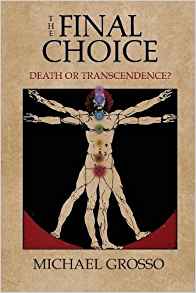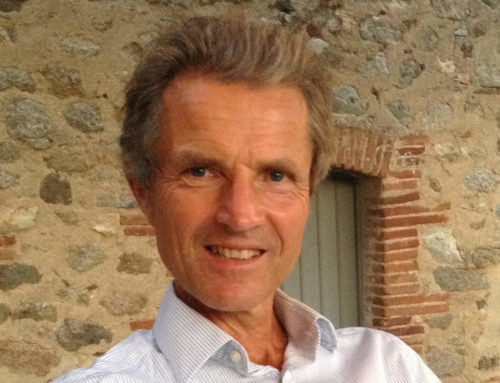Book review by David Lorimer
THE FINAL CHOICE
Michael Grosso
White Crow Books, 2017, 208 pp.
ISBN: 978-1-78677-029-5
I read the first edition of this provocative and erudite book in 1985, the year after I had met the author in New York on a tour to promote my first book Survival? Mike was then teaching philosophy at a local college, and I immediately found a kindred spirit in his broad outlook as reflected in this study. He coined the word ‘technocalypse’ in 1995 to describe the convergence of the apocalyptic imagination and modern technology with its terrifying imperative to continue upgrading nuclear weapons as each side appears to be falling behind, an insane spiral driven by the exigencies of realpolitik and perhaps signalling a terminal civilisation. The thesis of the book is the necessity of ‘a dramatic and broad-based transformation of consciousness to avert our calamitous future’ (p. 184) – a theme taken up in many books reviewed in these pages and reflected in the subtitle ‘death or transcendence?’. Accordingly, the book is set out in three parts: the crisis, potential to respond and the transformation.
Mike makes a strong case that parapsychology and transpersonal psychology could form the basis of a new fact-based mythology of transcendence and a transition into a larger frame of reference that would harness neglected human potentials. There is no doubt that things have accelerated and that we are nearer a crisis or turning point than when the book was first published. This larger frame of reference would represent ‘a creative synthesis of science and religion, art and technology, reason and intuition, personal and social, masculine and feminine’ (p. 9) – all corresponding to a deeper understanding of reality and therefore of human needs. Mike’s hope is that more of us can tune into Mind at Large of which we are all intrinsic expressions and act from this more universal outlook. However, as a society we are dominated by scientific materialism and consumerist growth, with a corresponding denial of death and the possibility of transcendence.
What Mike calls the craft of dying involves both living more consciously in harmony with the natural world and preparing to depart from it, including the body. In many traditions about death, Light plays a central transformative role, which also applies to the NDE. The spiritualisation of matter may even on occasion lead to mysterious incorruption of the physical body, as witnessed by a number of saints. The chapter on repressing immortality involves both hunger and resistance in the context of transcendence. It is here that the findings of parapsychology may help with its investigations of OBEs, NDEs, reincarnation memories and survival suggesting that the afterlife may be a permanent OBE, though Mike is also mindful of the artistic potential of ecstasy and imagination. Here he brings in Greek shamanism, phenomenology, Jung and witness consciousness attesting to the reality of Mind at Large. This leads him into an analysis of near death epiphanies, which he regards as a metaphysical paradigm-buster, giving examples of veridical OB perceptions: ‘the NDE is to psychology what quantum mechanics is to physics’ (p. 95). Mike places this within the larger history of psychical research which has elicited huge resistance in materialistic circles. He observes that the main obstacle to belief in life after death is not lack of evidence, but rather the mindset of the investigator and the difficulty of deciding between survival and super ESP in specific cases. However, he is surely correct in noting that the pervasive dogma of materialism constrains our perception of the possible.
He then articulates a very useful concept in the archetype of death and enlightenment (ADE) which he thinks shows up in psychedelic experiences, UFO revelations, ancient mystery rituals, dreams and hallucinations. Here the pattern is one from enclosure to disclosure, from darkness to light, ‘an expansion of conscious capacity’. Perhaps this archetype is now emerging on a global scale, and Mike speculates about the imminent possibility of a global NDE, either in nuclear or ecological terms. The uncomfortable truth is that business as usual maximises the chances of disaster, yet there is huge individual, social and economic resistance to undertaking the necessary systemic transformation, especially ‘without a felt sense of human solidarity in a critical mass of humanity to launch the change’ (p. 132). Existentially, he sees death as annihilation as the mirror of a conception of life as devoid of meaning, which itself is an outcome of materialism and nihilism. In common with Ervin Laszlo, Mike doubts if breakthrough is possible without breakdown.
However, he shows that we are not alone – there is a rich history of helping apparitions, including the Virgin Mary and angels as detailed in the three books by the Dutch physician Hans Moolenburg; then there are miraculous interventions by the likes of St Padre Pio, Daskalos and Peter Deunov, especially to help those close to them. Sometimes these interventions even save lives. A number of prophecies seem to line up with apocalyptic scenarios, archetypally involving death and rebirth and that may be attributed to the activity of Mind at Large. Mike speculates that with our prevailing masculine will to power, capitalism, consumerism and militarism wreaking havoc, we perhaps need a goddess to bring man into psychosexual bliss, or at any rate to a deeper experience of love. He remarks that the cult of the virgin might be seen as a type of Tantric yoga, but I myself would align more with the energy of Mary Magdalene, so powerful where I live and forming part of the political basis of the community at Tamera in Portugal.
The last chapter discusses truth in transformation and imagination rather than conformity. Our enlarged human potential has already been amply illustrated in previous chapters in a variety of contexts – here we need to move beyond fear and paranoia to transformation and metanoia. It is the poetic imagination, as argued by Vico in the early 18th century, that leads to the renewal of society, as much in his day as ours. Parapsychology suggests that belief in a positive outcome is pivotal (sheep and goats) and that we must choose to believe in a vision of renovation in order to hasten its coming (p. 197). However, this will necessitate grassroots movements such as Thrive, whose film has now been seen by 81 million people in 27 languages (www.thrivemovement.com) – the bottom line is that real transformation can only come from within, as Jung also realised in his essay on the undiscovered self. As with David Ray Griffin’s book reviewed below, we need to be fully aware of hidden agendas while directing our energy towards sowing seeds of the new. This book provides readers with a rich and highly informative resource in this respect.
Buy The Final Choice here.

